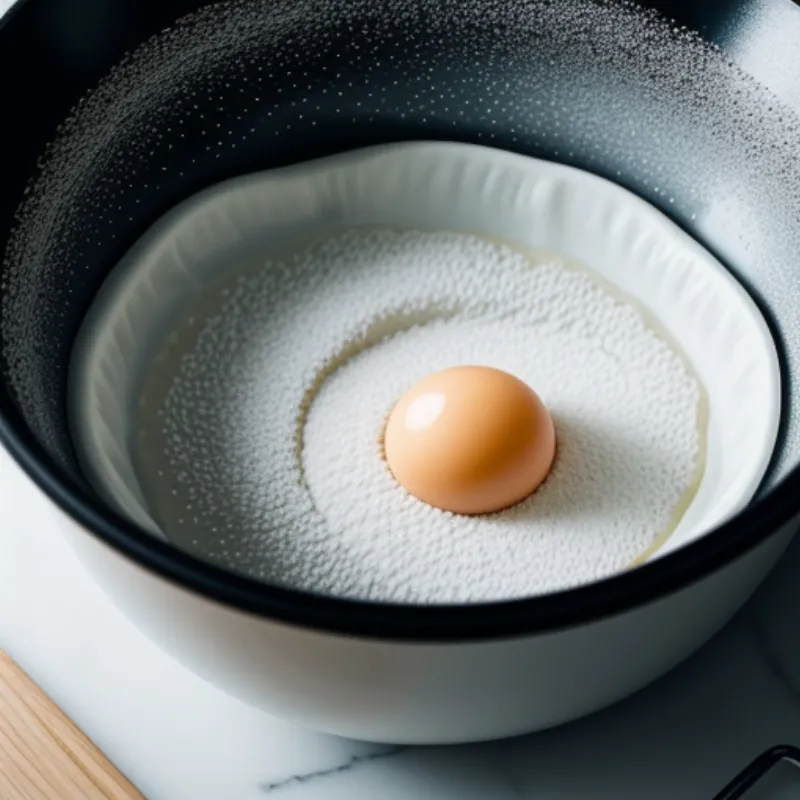Pan di Spagna, the Italian sponge cake, is a blank canvas for culinary creativity. This light, airy, and subtly sweet cake is the foundation for countless classic Italian desserts, from tiramisu and zuccotto to fruit tarts and layer cakes. Its delicate crumb and neutral flavor profile make it incredibly versatile, taking on the flavors of whatever creams, fruits, or liqueurs you pair it with.
Today, we’ll unlock the secrets to baking a flawless Pan di Spagna at home. Don’t be intimidated by its elegant simplicity – with this step-by-step guide, even baking novices can achieve a beautifully risen and golden sponge cake. Get ready to impress your friends and family with your newfound Italian baking prowess!
Ingredients You’ll Need:
- 6 large eggs, at room temperature
- 1 cup (200g) granulated sugar
- 1 cup (125g) cake flour, sifted (or substitute with all-purpose flour, see FAQs)
- 1/4 teaspoon salt
- 1 teaspoon pure vanilla extract
- Zest of 1 lemon (optional, for a bright citrus note)
Essential Tools:
- Stand mixer or electric hand mixer
- Two 9-inch round cake pans
- Parchment paper
- Sifter (if using all-purpose flour)
- Rubber spatula
- Wire rack
 Whisking Eggs and Sugar
Whisking Eggs and Sugar
Let’s Get Baking!
- Prepare the Pans: Grease and flour two 9-inch round cake pans. Line the bottoms with parchment paper for easy removal later.
- Whisk the Eggs and Sugar: In a large bowl, or the bowl of your stand mixer, beat the eggs and sugar together on high speed for about 8-10 minutes. The mixture should become pale yellow, thick, and tripled in volume. You’ll know it’s ready when it forms a ribbon that slowly dissolves back into the batter when you lift the whisk.
- Gently Incorporate Dry Ingredients: In a separate bowl, whisk together the flour and salt. Gradually add the dry ingredients to the egg mixture, about 1/4 cup at a time, gently folding with a rubber spatula. Be careful not to deflate the batter – you want to maintain its airy texture.
- Add Flavor: Stir in the vanilla extract and lemon zest (if using) until just combined.
- Bake: Divide the batter evenly between the prepared cake pans. Bake in a preheated oven at 350°F (175°C) for 25-30 minutes, or until the cakes are golden brown and a toothpick inserted into the center comes out clean.
- Cool and Serve: Let the cakes cool in the pans for 10 minutes before inverting them onto a wire rack to cool completely.
Tips and Tricks for Pan di Spagna Success:
- Room Temperature Ingredients: Using room temperature eggs is crucial for achieving maximum volume when whipping. Cold eggs won’t incorporate as much air.
- Don’t Overmix: Once you add the flour, be gentle! Overmixing will develop gluten and result in a tough, dense cake.
- Avoid Opening the Oven Door: Resist the urge to open the oven door during the first 20 minutes of baking. This can cause the cake to collapse.
- Test for Doneness: Always check for doneness with a toothpick. If it comes out with wet batter, bake for a few minutes longer.
 Layering Cake with Cream and Berries
Layering Cake with Cream and Berries
FAQs About Making Pan di Spagna:
- Can I use all-purpose flour instead of cake flour? Yes, but sift it twice first to achieve a lighter texture.
- My Pan di Spagna sunk in the middle! What happened? This usually indicates underbaking. Make sure to test for doneness with a toothpick.
- Can I freeze Pan di Spagna? Absolutely! Wrap the cooled cake layers tightly in plastic wrap and freeze for up to 2 months.
A Taste of Italy in Every Bite
Pan di Spagna is a testament to the beauty of simplicity in baking. With just a few key ingredients and a little care, you can create a cake that’s as impressive as it is delicious. So go ahead, try this recipe and experience the joy of baking a classic Italian treat! Don’t forget to share your beautiful creations with us in the comments below.
Happy baking!
